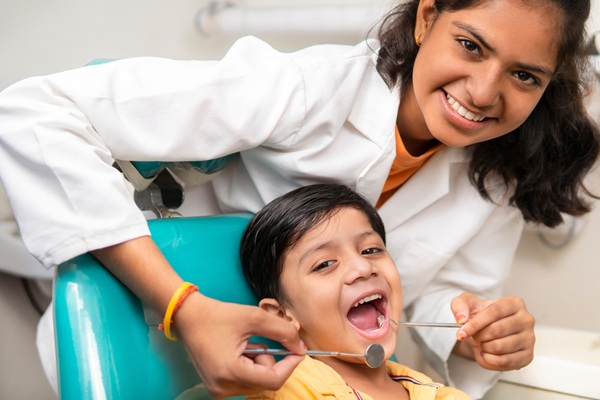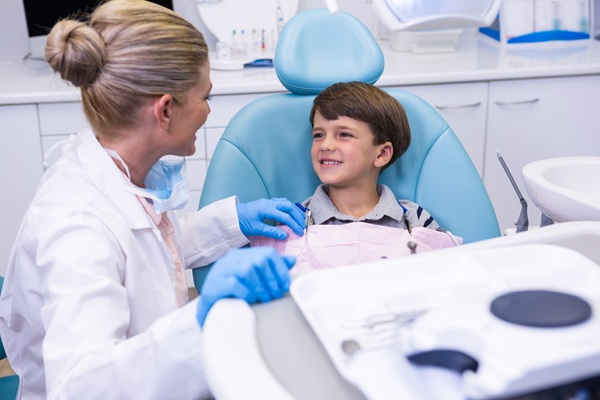How a Children’s Dentist Can Help Prevent the Need for Later Orthodontic Care

As a parent, you might go to a children's dentist because you do not want your child to get sick. You want your child’s teeth to stay clean. Many things that a children’s dentist does will involve treating early problems. Keep reading to find out more.
About dental appointments
A parent should schedule an appointment for the child twice a year. That way, the children’s dentist can keep an eye on any issues as the teeth develop. During an examination, the parent can ask the dentist about orthodontic issues. A children’s dentist can sometimes prevent the need for orthodontic care later on.
Why a child might need braces
There are some things that a dentist can do to reduce the chances for a child to have orthodontic care. It comes down to the kind of prevention that a dentist focuses on. One reason a child will need braces is overcrowding. This might happen if the baby teeth come out too early. The primary teeth are vital when it comes to holding a space for the new teeth to come in.
But decay can cause the teeth to come out too early. That can cause the nearby teeth to shift toward that position, reducing the space for the permanent teeth. Once the tooth comes in, it might be sideways or wherever it can find room. It can also be on top of other teeth.
What a children’s dentist can do
A dentist can keep the child’s teeth healthy to reduce the chances of them coming out too soon. For instance, by preventing decay, there will not be as much risk of an infection in the tooth. Another thing that a dentist can do is provide a mouthguard for sports. That can protect the teeth while making it less likely that a baby tooth will be lost. That can make a huge difference in preventing later orthodontic care.
When to consider orthodontics
Even with healthy teeth, a child may still have crooked or gapped teeth. A child might sometimes benefit from early treatment. The dentist might recommend treatments as early as 7 years old. However, many children will wait for braces until middle school or the end of elementary school.
This decision is up to the dentist and the number of permanent teeth there are. If the adult teeth come in early, then orthodontic treatment can begin. But if the teeth fall out late, some waiting might be needed. A dentist can also create space for the new teeth to come in. That way, the adult teeth can properly come in.
Visit a children’s dentist today
Between early orthodontic treatment and good tooth care, a dentist can help prevent later orthodontic care. If you want to reduce the chances of your child needing braces, now is the time. Schedule an appointment at the dental office today. You can have more questions answered by setting up your child’s appointment.
Request an appointment here: https://novapedsdentistry.com or call Nova Pediatric Dentistry at (201) 812-2952 for an appointment in our Dumont office.
Check out what others are saying about our services on Yelp: Read our Yelp reviews.
Recent Posts
Composite fillings are a popular choice for treating cavities in children's teeth. These fillings consist of tooth-colored resin that blends seamlessly with natural teeth, making them an ideal option for those who want both functional and aesthetic solutions. Composite fillings are especially beneficial for children as they offer a durable, effective, and visually appealing way…
A kid friendly dentist understands the importance of creating a welcoming and comfortable environment tailored to young patients' needs to help alleviate the child's stress or anxiety. Establishing positive dental experiences early on is not just about the present, but it also ensures children develop healthy oral hygiene habits that last a lifetime. Learn the…
Infants can benefit from seeing a pediatric dentist when primary teeth begin to erupt. Primary teeth are placeholders for permanent teeth and should receive the same attention, including appropriate home care.Primary teeth are crucial to a baby's health and development. Therefore, dentists encourage parents to begin an infant's oral hygiene routine as soon as possible…
Going to an emergency pediatric dentist can give your child immediate dental needs. Treating urgent dental issues can provide relief right away. It can also prevent complications. Here are the necessary steps that you can take even before the drive to your emergency pediatric dentist.Showing distress will only intensify the child’s anxiety. This will make…


